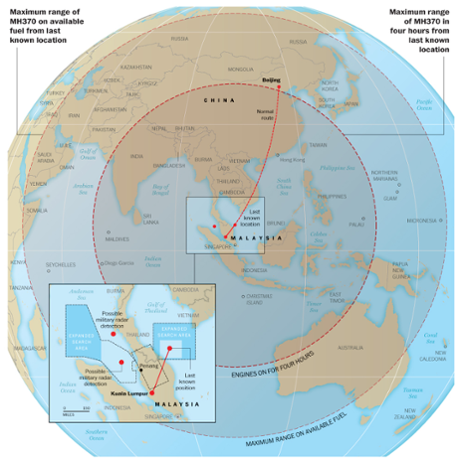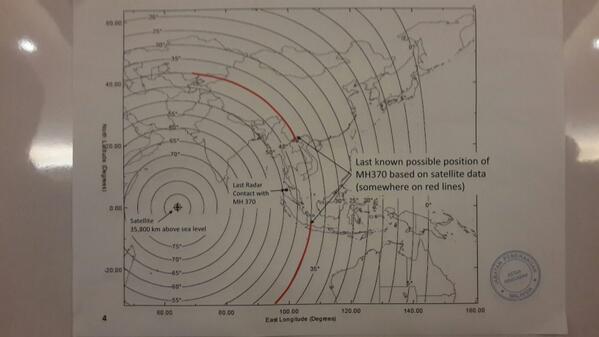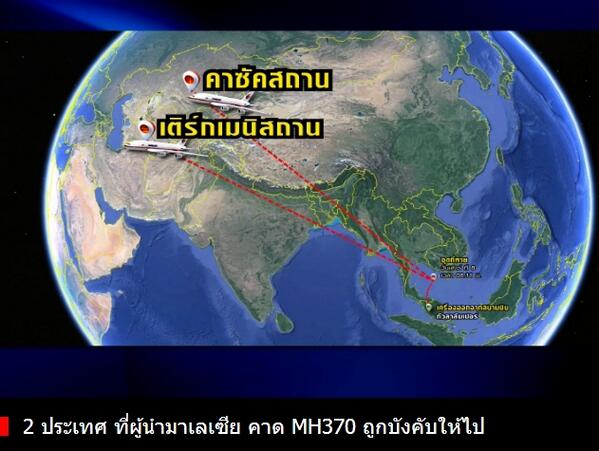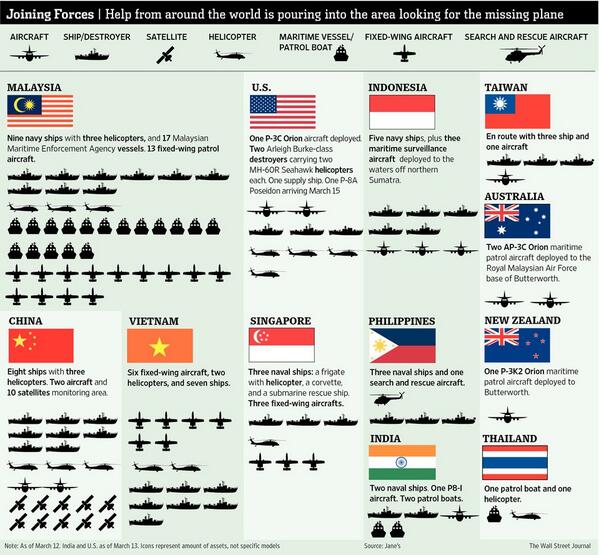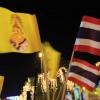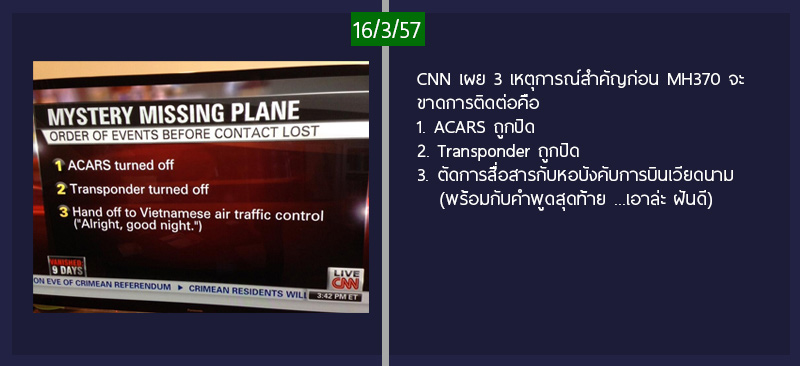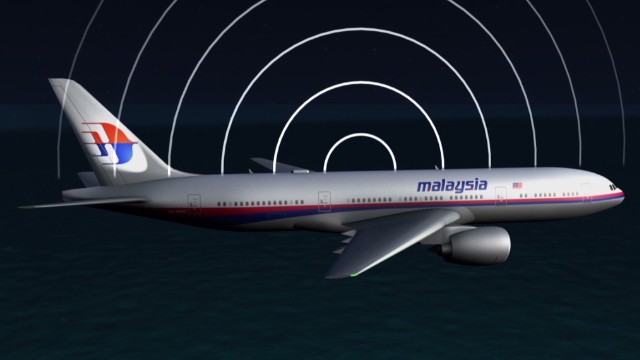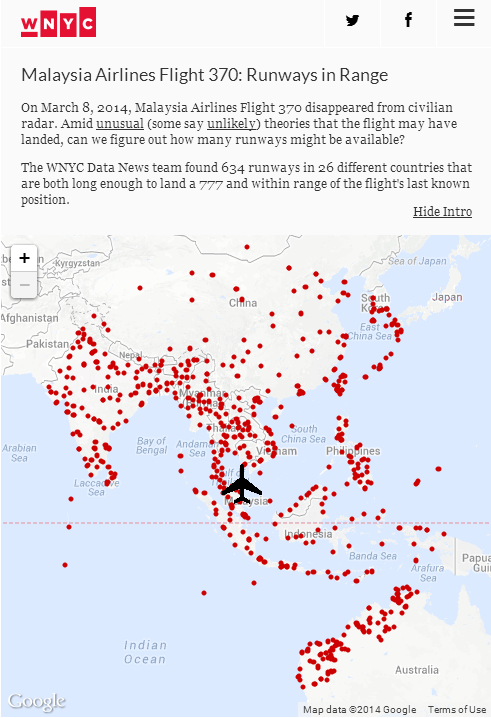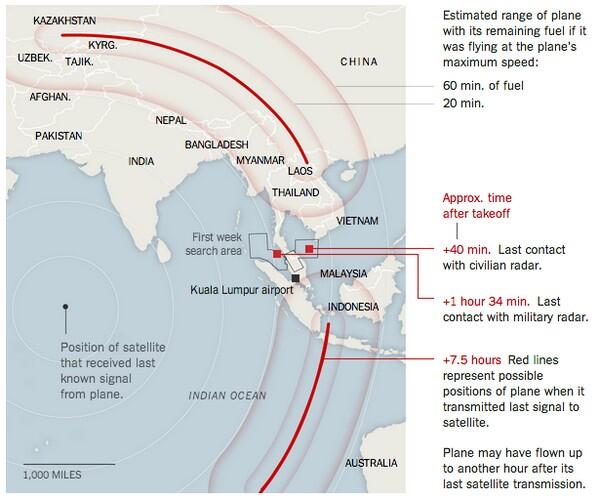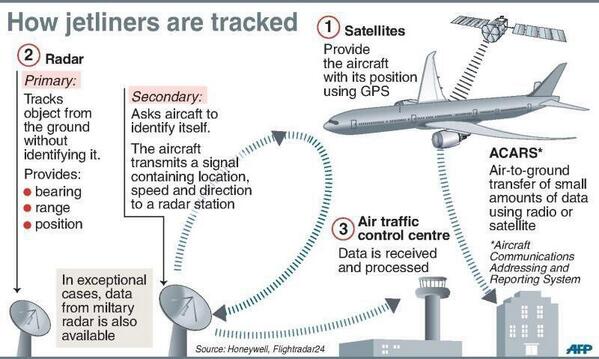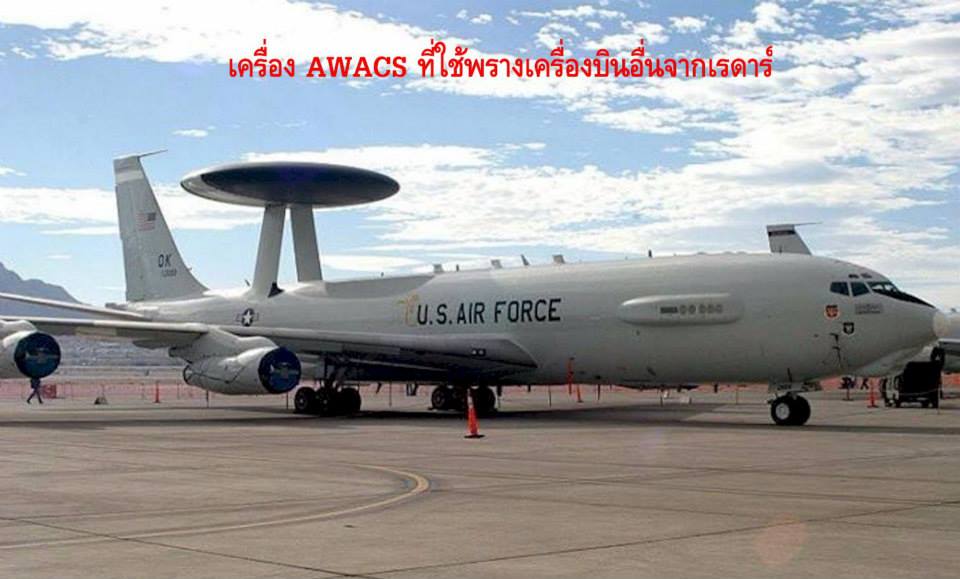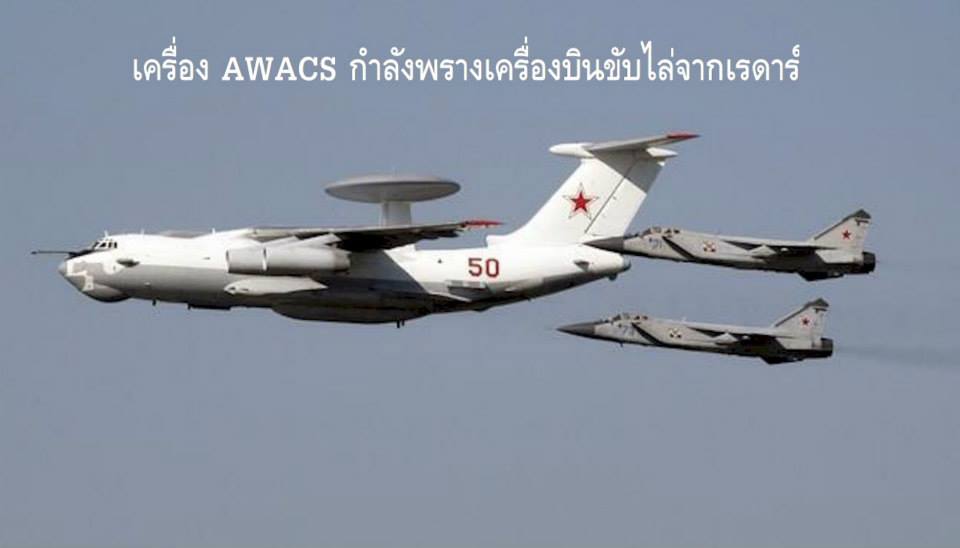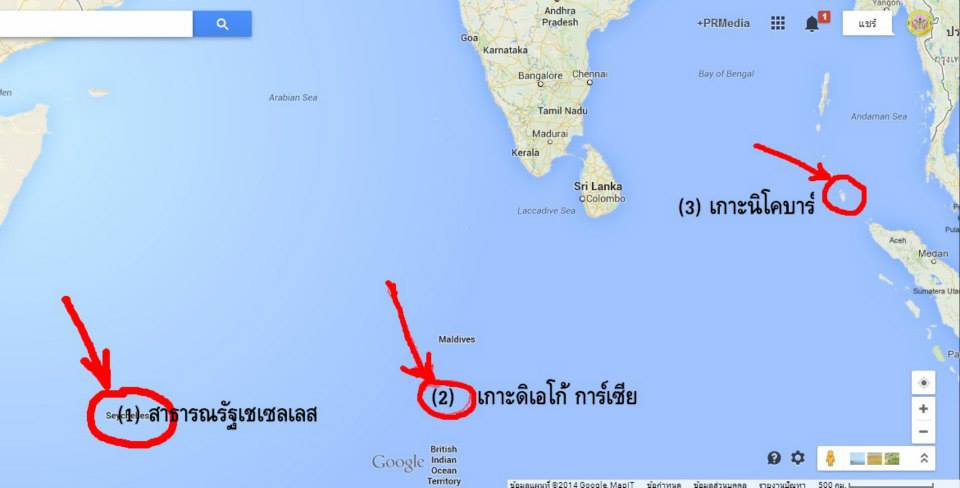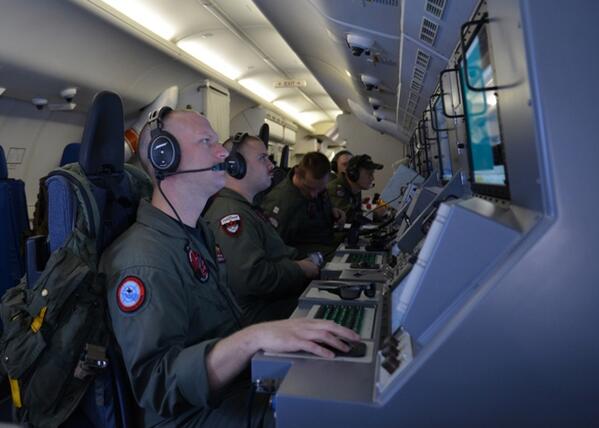Plane theories: Mystery of Flight 370
STORY HIGHLIGHTS
- Beijing-bound aircraft disappeared a week ago with 239 passengers, crew aboard
- Pilots homes searched: What do we know?
- What scenarios are still being considered about the missing plane?
- Aircraft communications offer clues
(CNN) -- Every day brings new details and new questions surrounding the disappearance of Malaysia Airlines Flight 370, a Boeing 777 with 239 people aboard that went missing on March 8 en route from Kuala Lumpur to Beijing.
Here are 10 questions surrounding what we know and what we don't know:
1. What do we know about the pilots?
The pilot, Capt. Zaharie Ahmad Shah, 53, has 18,365 flying hours. He joined the airline in 1981. For a veteran 777 pilot with Shah's background, 18,000-plus total career hours in the air is not out of the ordinary.
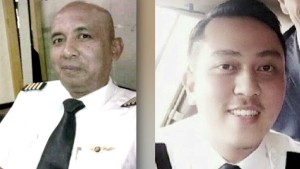 Who were the men who flew flight 370
Who were the men who flew flight 370
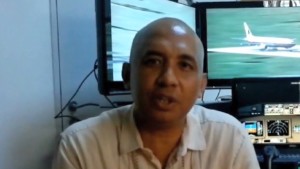 Police search pilot's home
Police search pilot's home
Shah reportedly built a flight simulator in his home. It's somewhat common among the worldwide community of aviation enthusiasts to use online flight simulator programs to replicate various situations. Simulators allow users to virtually experience scenarios in various types of aircraft.
Programs can simulate real flight routes, including landings and takeoffs from actual airports. But pilots will tell you that no matter how realistic a simulator may be, by no means can it replace the experience gained from sitting in an actual cockpit and flying for real.
Shah is married and has three children, the youngest of whom is a daughter in her 20s who lives with her parents. They have one grandchild.
First Officer Fariq Ab Hamid, 27, joined Malaysia Airlines in 2007. He has 2,763 flying hours and was transitioning from flight simulator training to the Boeing 777-200ER.
The amount of flight time Hamid has could be a bit low for a 777 pilot flying for an American airline, experts said. But the system of pilot advancement is often faster among airlines in smaller nations. Some airlines in these countries offer cadet programs that find talented and promising young pilot candidates and offer them intensive, specialized training, experts say.
Hamid lives with his parents and some of his four siblings, according to a neighbor. A source close to the investigation told CNN that Malaysian police had searched Shah's and Hamid's homes on Saturday.
Cockpit visit: A woman named Jonti Roos has said Hamid invited her and a friend into the cockpit for a 2011 flight from Phuket, Thailand, to Kuala Lumpur, Malaysia, from takeoff to touchdown. Though this would be a violation of U.S. regulations put in place after the September 11, 2001, attacks, the legality varies from country to country.
Upon learning of Roos' assertion, Malaysia Airlines said it was "shocked," and former FAA Chief of Staff Michael Goldfarb said such behavior "violates every code of conduct."
2. What do we know about communications to and from the plane?
Key clues about the plane have come from developments surrounding data and voice communications. The plane is equipped with a standard voice communications radio and two kinds of technology: transponders and so-called ACARS systems.
Voice: The last known voice communication from the 777's cockpit were these words: "All right, good night."
We don't know whose voice spoke the words, but they were uttered as the plane neared Vietnamese air traffic control air space at about the same time the transponder was shut off, according to Malaysian Prime Minister Najib Razak.
 Malaysian PM points to deliberate action
Malaysian PM points to deliberate action
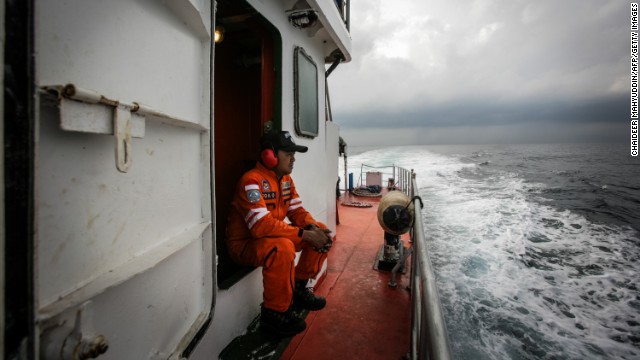 Photos: The search for Malaysia Airlines Flight 370
Photos: The search for Malaysia Airlines Flight 370
Transponder: A transponder is a system controlled from the cockpit that transmits data about the plane via radio signals to air traffic controllers. It combines with ground radar to provide air traffic controllers with details about the plane, including its identification, speed, position and altitude.
It's a key element because it stopped working during the flight. The transponder is between the pilots' seats and can be turned off with a twist of the wrist, said former airline Capt. Mark Weiss. Because of the vital information it provides, it would be highly unlikely for a pilot to shut it off, Weiss said.
Transponders are considered reliable, but they are known to fail sometimes, which is why the airliner carries a backup transponder. Activating the backup transponder would have required a pilot or co-pilot to make the switch, which may be difficult in a high-stress situation, Weiss said. Without information from the cockpit voice recorder and flight data recorder, it will be difficult to know who was in the cockpit and what happened. But that may be intentional.
One way to hide a plane's flight information from air traffic controllers would be to turn off the transponder. Experts give conflicting opinions about what transponder development could mean: One theory points to someone -- perhaps a hijacker -- wanting to hide the plane before changing course; another theory is the transponder could have stopped transmitting because of a catastrophic power failure.
ACARS: A series of "handshakes" -- or electronic connections -- from the plane's Aircraft Communications Addressing and Reporting System were transmitted to satellites for four to five hours after the transponder stopped sending signals, a senior U.S. official told CNN.
Combining that information with radar data and the amount of fuel aboard suggests that the plane might have flown to the Indian Ocean, the official said. That would be the opposite direction of the plane's scheduled route. But the reports on this latest lead have conflicted: Malaysian authorities had said earlier that nothing on the plane was transmitting after 1:07 a.m. March 8. However, on Saturday, Malaysian Prime Minister Najib said that "based on new satellite communication, we can say with a high degree of certainty that ... ACARS was disabled just before the aircraft reached the east coast of peninsular Malaysia."
Introduced in 1978, the ACARS air/ground data system was initially used by airlines to record and report basic aircraft movement messages, according to Rockwell Collins, which sells avionics and communications systems to aviation customers. In 1989,the use of ACARS was expanded to include air traffic service communications. It uses three radio frequency paths for delivery: two ground-based satellite systems (VHF and UHF) and a satellite link (SATCOM) to send and receive information.
"It's a system where you send digital communications from ship to ground," said John Testrake, a pilot for American Airlines with more than 20 years' experience flying. The automated system generally sends routine messages to the airline, such as when the aircraft lifts off or lands and how much fuel it may have, he said. It can also be used to communicate text messages such as "light continuous turbulence over the Rockies south of Denver," he said.
"You might want to send that report to your dispatcher so they can give a heads up to the next flight that's coming into that area." Tom Haueter, former director of the National Transportation Safety Board's Office of Aviation Safety, said ACARS typically beams down engine parameters, temperatures, the amount of fuel burn and any maintenance discrepancies.
According to Malaysia Airlines, all of its aircraft are equipped with ACARS, which transmits data automatically. "Nevertheless, there were no distress calls, and no information was relayed," the airline said.
The aircraft's ACARS was sending pings more than five hours after the transponder last emitted a signal, an aviation industry source told CNN on Friday. These pings don't provide information about speed or altitude, but they do indicate the plane was intact for that long since an aircraft has to be powered and have structural integrity for the ACARS to operate, the source said.
The pings were detected by satellites. Combined with radar and other data, they were used to calculate where the plane might have traveled. A U.S. official, who spoke to reporters on condition of anonymity, said the satellite recorded electronic "handshakes" with the 777 that were later analyzed.
The information gleaned from this analysis -- which the U.S. official described as "unprecedented" -- supports the conclusion that the aircraft turned toward the west, away from the Gulf of Thailand and toward the Indian Ocean. Referring to the five-to-six hour range in which the plane may have flown after its transponder cut off, the same official said, "We believe we have the time of the loss of the airplane within an hour."
3. Where could the plane be? What could have happened to it?
As evidence grows that the plane could have flown for hours after losing contact with air traffic control, the search area, too, has ballooned.
 Search zeroing in on Indian Ocean
Search zeroing in on Indian Ocean
Malaysia's aviation authorities, with concurrence from U.S. and British government experts, concluded the plane's last communication with the satellite was in one of two possible corridors: "a northern corridor stretching from the border of Kazakhstan and Turkmenistan to northern Thailand or southern corridor from Indonesia to southern Indian Ocean," Najib told reporters Saturday.
As of Saturday, 43 ships and 58 aircraft from 14 countries were involved in the search. And experts from the United States, Britain and China are involved. Two Chinese warships headed Saturday to the Strait of Malacca to continue their search, the Chinese state news agency Xinhua reported.
If the plane has crashed into the water, large pieces of the plane would not still be floating by now, according to Steve Wallace, the U.S. Federal Aviation Administration's former director of accident investigation. But "it's certainly possible that substantial pieces of lightweight debris, not aircraft structure, could be found floating six days after the aircraft struck the water," he said. That could include life jackets and seat cushions, he said.
The latest data and calculations provided by Malaysian officials show an arc of places the aircraft could have traveled. Because the northern reaches of the arc include some tightly guarded airspace over India, Pakistan and U.S. installations in Afghanistan, U.S. authorities believe it more likely the aircraft crashed south of India into waters outside of the reach of radar, one U.S. official said.
That's because, had it flown farther north, it would likely have been detected by radar, the official said. And a classified analysis of electronic and satellite data suggests Flight 370 likely crashed either in the Bay of Bengal or elsewhere in the Indian Ocean, CNN learned Friday.
The analysis, conducted by the United States and Malaysian governments, used radar data and satellite pings to calculate that the plane diverted to the west, across the Malayan Peninsula, and then either flew in a northwest direction toward the Bay of Bengal or southwest into another part of the Indian Ocean. Malaysian military radar registered dramatic changes for Flight 370 in altitude -- going up to 45,000 feet, before descending to 23,000 feet -- and cut an erratic path as it flew across Malaysia in what are some of the last known readings of the plane's location, according to a senior U.S. official.
The same official, who is familiar with analysis of the data and declined to be identified because of the sensitive nature of the information, cautioned that this assessment is not definitive. The readings may not be wholly reliable because of the distance the plane was operating from the radars that detected it, the official said.
4. Couldn't a pilot just "fly under the radar?"
Theoretically, yes. As a tool intended to keep track of what's going on in the sky, radar data don't extend all the way to the ground.
Military pilots are trained to take advantage of this when they need to sneak into a country undetected. But those aircraft are also equipped with terrain-evading radar and other features intended to help fighter and helicopter pilots hug the ground, said aviation consultant Keith Wolzinger of the Spectrum Group. Understandably, Boeing doesn't offer those features on its commercial airliners.
"Airline pilots are not trained for radar avoidance," said Wolzinger, himself a former 777 pilot. "We like to be on radar."
Also, unlike military craft, civilian airliners don't have gear to detect when they've been spotted on radar. So any efforts to fly undetected would be rudimentary.
5. Could the plane have landed somewhere?
One theory U.S. officials are considering, according to a Wall Street Journal report, is that someone might have taken the plane to be used for some other purpose later. So it's theoretically possible that the plane could have landed at a remote airstrip where it's being hidden.
But there are some big holes in that theory. The 777 is a big plane. It requires, at minimum, nearly a mile to land. And, says Quest, there's the matter of getting it someplace without setting off alarm bells.
"You can't just fly a Triple 7 and not have a radar trace," he said. One senior U.S. official, citing information Malaysia has shared with the United States, told CNN that "there is probably a significant likelihood" that the aircraft is on the floor of the Indian Ocean.
6. Could mechanical failure explain it?
It's one of the possibilities, but less so since Najib on Saturday said the plane's movements "are consistent with deliberate action by someone on the plane."
The absence of a debris field could suggest that the pilot might have made an emergency landing on water and the plane then sank intact, but there is still the mystery of the distress signal. There wasn't one.
However, aviation consultant Kit Darby has said that it's possible there was a power failure, and during the hour when he had backup power, the pilot was attempting to return to "the airports and a region he knows." There's also the possibility that the tail or a wing tore from the fuselage. This particular Boeing had suffered a clipped wingtip in the past, but Boeing repaired it.
Another possibility is that a window or door failed, which would cause the temperature inside the plane to drop to 60 degrees below zero, creating a freezing fog and giving crew members only seconds to don oxygen masks before becoming disoriented and then incapacitated.
7. How likely is hijacking or terrorism in this situation?
 Former CIA: This is unprecedented
Former CIA: This is unprecedented
The CIA and FBI aren't ruling it out, but authorities aren't ruling out much at this point. It's highly suspicious that the plane might have turned around. Those suspicions are further fueled by the loss of communications with the plane, considering the aircraft had "redundant electrical systems" that would have had to be disabled.
Robert Francis, former vice chairman of the U.S. National Transportation Safety Board, said his first thought upon hearing the circumstances of the flight's mysterious disappearance was that it blew up, but even an explosion would not be proof of terrorism.
The two men who used stolen passports to board the plane were identified by Interpol as Iranians Pouri Nourmohammadi, 18, and Delavar Seyed Mohammad Reza, 29. Malaysian investigators say neither of them has any apparent connection to terrorist organizations. Stolen passports don't necessarily indicate terrorism.
In fact, passengers flew without having their travel documents checked against its lost-and-stolen passport database more than a billion times in 2013, according to Interpol. Among the reasons someone might use a stolen passport: to emigrate to another country, to export goods without being paying taxes or to smuggle stolen goods, people, drugs or weapons.
8. What other theories and speculation has been offered?
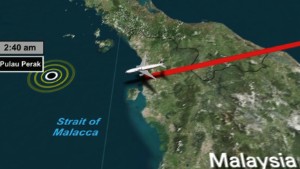 Conspiracy theories surround Flight 370
Conspiracy theories surround Flight 370
Lithium batteries: Investigators are looking into the possibility that lithium batteries, which have been blamed in previous crashes, played a role in the disappearance, according to U.S. officials briefed on intelligence and law-enforcement developments. The officials spoke on condition of anonymity because they were not authorized to speak to the media.
If lithium batteries were being carried in the cargo hold and they caused a fire, it could have caused the 777 to crash. But that would not explain other anomalies, such as why the plane appears to have turned westward. A pilot's likely first instinct if lithium batteries were smoldering would have been to turn around and return to the airport of origin -- not to fly an additional five hours, said Arthur Rosenberg, an aviation expert who is a pilot, engineer and partner in the New York-based law firm Soberman & Rosenberg.
Meteor: A meteor was reported in the area around the time Flight 370 took off, but this seems to be atop a list of strange theories popping up in the absence of empirical data explaining the plane's disappearance. Given what little is known about the flight path, and the astronomical odds of such an event, a meteor strike seems like an ultralong shot explanation.
9. What about reports that passengers' cell phones continued operating after the flight's disappearance?
When phones are disabled or turned off -- which would presumably happen after a plane crash -- calls to those cell phones go directly to voice mail. Friends and loved ones of the missing passengers, however, reported ringing when they called. Technology industry analyst Jeff Kagan says a call would connect first to a network before trying to find the end user, and the ringing sound callers hear masks the silence they would otherwise hear while waiting for the connection to be made.
"If it doesn't find the phone after a few minutes, after a few rings, then typically, it disconnects, and that's what's happening," he said.
10. Is this the first time a plane has vanished?
No. In 2009, Air France Flight 447, crashed in the South Atlantic between Rio de Janeiro and Paris during turbulent weather conditions. It took four searches and almost two years before the bulk of the wreckage and majority of bodies were recovered. The voice and data recorders weren't found on the ocean floor until May 2011.
Analysis shows 2 possible Indian Ocean paths for airliner
Interactive: What happened to Malaysia Airlines Flight 370?
Transponder's fate may prove key to solving puzzle
Malaysia Airlines Flight 370: Days pass, no word of loved ones
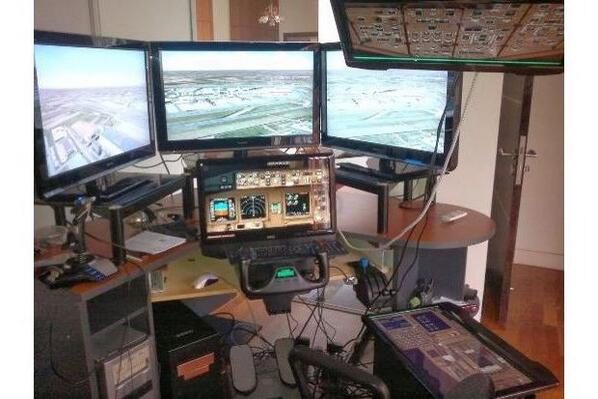












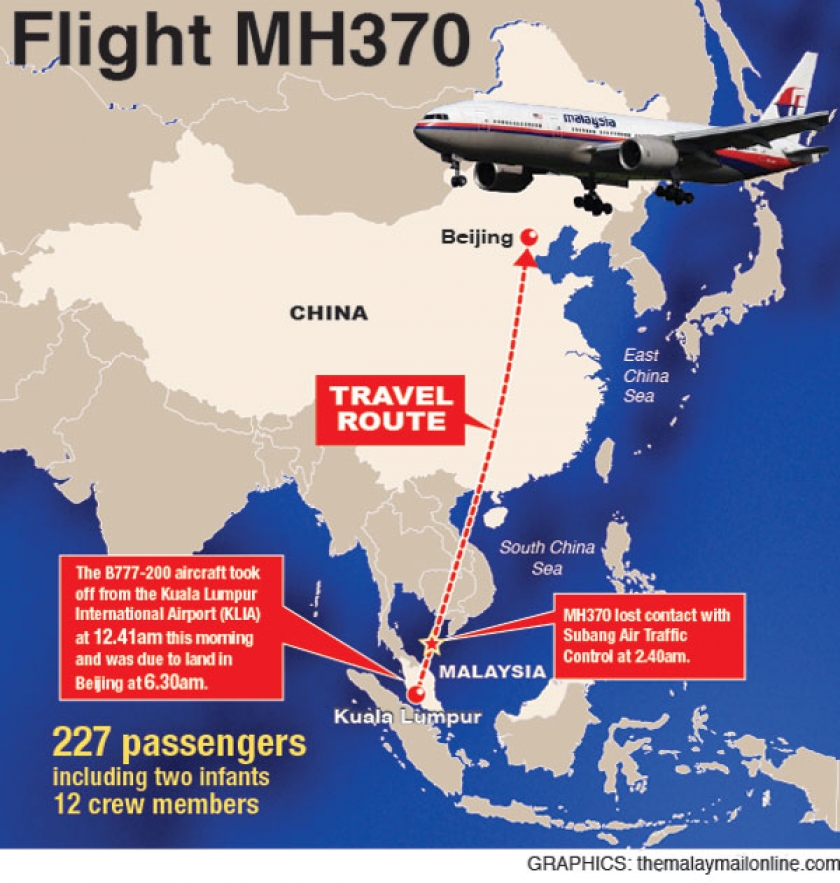
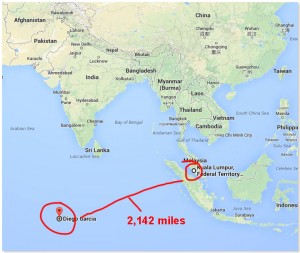
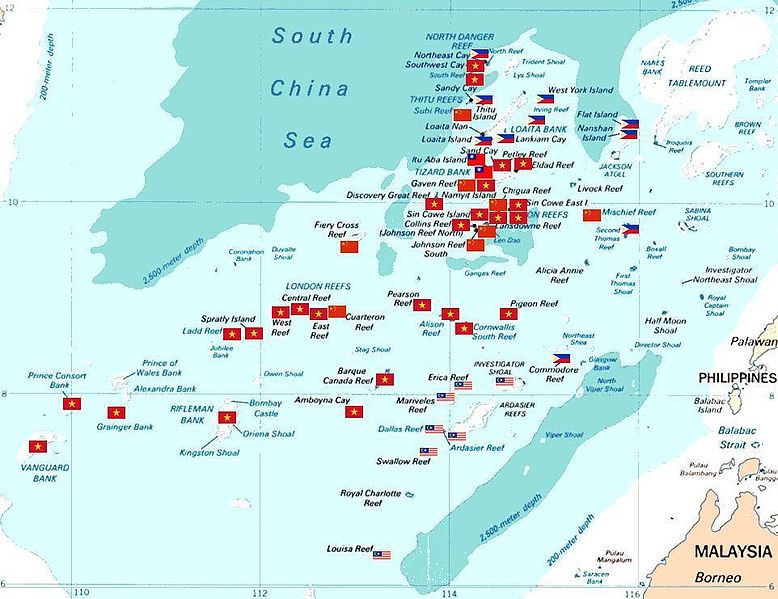
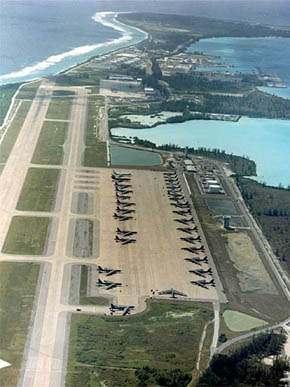

.jpg)
